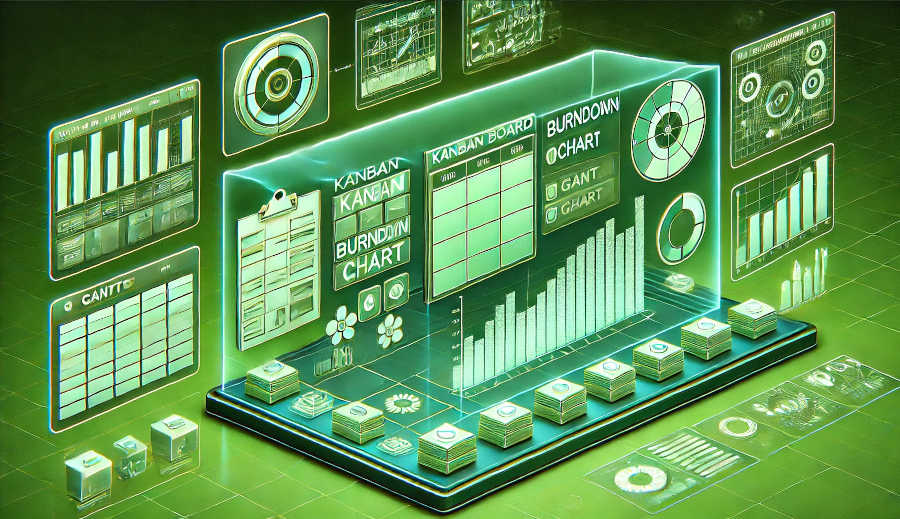The significance of team communication and collaboration in the IPD process cannot be overstated. Effective communication ensures that all team members are aligned with the project's goals, understand their roles, and are aware of the progress being made. It also facilitates the timely identification and resolution of issues, thereby preventing potential roadblocks. Collaboration, on the other hand, enables the pooling of diverse expertise and perspectives, leading to more innovative solutions and better decision-making. When team members collaborate effectively, they can leverage each other's strengths, compensate for weaknesses, and collectively navigate the complexities of the IPD process. In essence, communication and collaboration are the glue that holds the IPD process together, enabling teams to work cohesively towards a common objective. As such, organizations must prioritize the development of these skills among their teams to ensure the successful implementation of IPD projects.
Moreover, the dynamic and often unpredictable nature of the IPD process further underscores the need for strong communication and collaboration skills. Unlike traditional product development approaches, IPD requires continuous interaction and feedback loops among team members. This iterative process demands that team members are not only adept at conveying their ideas clearly but also at actively listening to and incorporating feedback from others. Additionally, the cross-functional nature of IPD teams means that members must be able to navigate and bridge the communication gaps that often exist between different disciplines. This requires a high degree of emotional intelligence, adaptability, and a willingness to engage in open and honest dialogue. In summary, the success of the IPD process hinges on the ability of team members to communicate and collaborate effectively, making these skills indispensable for any organization looking to excel in product development.
The Role of Communication in IPD
Effective communication is the cornerstone of any successful IPD project. In the context of IPD, communication is not just about the exchange of information; it is about ensuring that the right information reaches the right people at the right time. This requires a structured approach to communication, where clear channels and protocols are established to facilitate the flow of information. For instance, regular team meetings, status updates, and progress reports are essential tools for keeping everyone informed and aligned. Additionally, the use of collaborative platforms and project management software can further enhance communication by providing a centralized repository for information and enabling real-time updates. By fostering a culture of transparency and open communication, teams can minimize misunderstandings, reduce the risk of errors, and ensure that everyone is working towards the same goals.
Another critical aspect of communication in IPD is the ability to convey complex technical information in a manner that is easily understood by non-experts. Given the multidisciplinary nature of IPD teams, it is common for team members to come from diverse backgrounds with varying levels of technical expertise. Therefore, it is essential for technical experts to be able to translate their knowledge into terms that are accessible to others. This not only facilitates better decision-making but also ensures that all team members are able to contribute meaningfully to the project. Furthermore, effective communication also involves active listening, where team members are encouraged to ask questions, seek clarification, and provide feedback. This two-way communication fosters a collaborative environment where ideas can be freely exchanged, and potential issues can be identified and addressed early on.
Lastly, communication in IPD must also extend beyond the immediate team to include stakeholders, customers, and other external partners. Engaging with these external parties is crucial for gathering valuable insights, aligning expectations, and ensuring that the final product meets the needs of the end-users. This requires a tailored approach to communication, where the message is adapted to suit the audience's level of understanding and interest. For example, while technical details may be important for the development team, stakeholders may be more interested in the project's progress, risks, and potential return on investment. By maintaining open lines of communication with all relevant parties, IPD teams can build trust, manage expectations, and ultimately deliver a product that satisfies all stakeholders.
The Importance of Collaboration in IPD
Collaboration is the lifeblood of the IPD process, enabling teams to harness the collective intelligence and creativity of their members. In the context of IPD, collaboration goes beyond mere cooperation; it involves the active engagement and integration of diverse perspectives to achieve a common goal. This requires a high degree of trust, mutual respect, and a willingness to work together towards a shared vision. Effective collaboration also necessitates the establishment of clear roles and responsibilities, where each team member understands their contribution to the project and how it fits into the larger picture. By fostering a collaborative environment, teams can leverage the strengths of each member, leading to more innovative solutions and better outcomes.
One of the key benefits of collaboration in IPD is the ability to tackle complex problems that require input from multiple disciplines. In traditional product development approaches, teams often work in silos, with each discipline focusing on their specific area of expertise. However, in IPD, the integration of different disciplines is essential for developing a holistic solution that addresses all aspects of the product. This requires team members to step out of their comfort zones, engage with others, and consider the broader implications of their decisions. For example, a design engineer may need to collaborate with a marketing specialist to ensure that the product not only meets technical specifications but also appeals to the target market. By working together, teams can identify potential issues early on, explore alternative solutions, and make more informed decisions.
Moreover, collaboration in IPD also fosters a sense of ownership and accountability among team members. When individuals are actively involved in the decision-making process and have a stake in the outcome, they are more likely to be committed to the project's success. This sense of ownership can drive motivation, creativity, and a willingness to go the extra mile to overcome challenges. Additionally, collaboration also promotes a culture of continuous learning, where team members can learn from each other's experiences, share best practices, and develop new skills. This not only enhances the team's overall capabilities but also contributes to their professional growth and development. In summary, collaboration is a vital component of the IPD process, enabling teams to achieve greater innovation, efficiency, and success.

Strategies for Enhancing Communication and Collaboration in IPD
To maximize the effectiveness of communication and collaboration in IPD, organizations must adopt a strategic approach that addresses both the technical and cultural aspects of these skills. One of the most effective strategies is the implementation of cross-functional teams, where members from different disciplines work together throughout the project lifecycle. This not only facilitates better communication and collaboration but also ensures that all perspectives are considered in the decision-making process. Additionally, organizations should invest in training and development programs that focus on enhancing communication and collaboration skills. These programs can include workshops, team-building exercises, and simulations that provide team members with the tools and techniques needed to work effectively in an IPD environment.
Another important strategy is the use of collaborative tools and technologies that support communication and information sharing. In today's digital age, there are numerous tools available that can facilitate real-time collaboration, such as project management software, video conferencing platforms, and shared document repositories. These tools not only enhance the efficiency of communication but also provide a centralized platform where team members can access and update information in real-time. Furthermore, organizations should also establish clear communication protocols and guidelines that outline the expectations for how team members should communicate and collaborate. This can include guidelines for conducting meetings, sharing updates, and resolving conflicts, among others.
Lastly, fostering a culture of open communication and collaboration is essential for the success of IPD projects. This requires leadership commitment and support, where leaders actively promote and model the desired behaviors. Leaders should encourage team members to share their ideas, provide feedback, and engage in open dialogue. They should also recognize and reward collaborative efforts, reinforcing the importance of these skills in achieving project success. Additionally, creating a safe and inclusive environment where team members feel comfortable expressing their opinions and taking risks is crucial for fostering innovation and creativity. By adopting these strategies, organizations can create an IPD environment that thrives on effective communication and collaboration, leading to the successful delivery of high-quality products.
Conclusion
In conclusion, team communication and collaboration skills are indispensable for the successful execution of the Integrated Product Development (IPD) process. These skills enable teams to navigate the complexities of IPD, integrate diverse perspectives, and deliver innovative and high-quality products. Effective communication ensures that all team members are aligned and informed, while collaboration fosters a culture of shared ownership and continuous learning. Organizations that prioritize the development of these skills and implement strategies to enhance communication and collaboration are better positioned to achieve their IPD objectives. As the product development landscape continues to evolve, the ability to communicate and collaborate effectively will remain a critical factor in the success of IPD projects. Therefore, investing in these skills is not just a strategic advantage but a necessity for any organization looking to excel in the competitive world of product development.
FAQ
What is the role of communication in the IPD process?
Communication plays a crucial role in the IPD process by ensuring that all team members are aligned with the project's goals, understand their roles, and are aware of the progress being made. It facilitates the timely identification and resolution of issues, prevents potential roadblocks, and ensures that complex technical information is conveyed in a manner that is easily understood by non-experts. Effective communication also involves active listening, where team members are encouraged to ask questions, seek clarification, and provide feedback, fostering a collaborative environment.
How does collaboration enhance the IPD process?
Collaboration enhances the IPD process by enabling teams to harness the collective intelligence and creativity of their members. It involves the active engagement and integration of diverse perspectives to achieve a common goal, tackling complex problems that require input from multiple disciplines. Collaboration fosters a sense of ownership and accountability among team members, driving motivation, creativity, and a willingness to overcome challenges. It also promotes a culture of continuous learning, where team members can learn from each other's experiences, share best practices, and develop new skills.
What strategies can organizations adopt to improve communication and collaboration in IPD?
Organizations can adopt several strategies to improve communication and collaboration in IPD. These include implementing cross-functional teams, investing in training and development programs, and using collaborative tools and technologies that support communication and information sharing. Establishing clear communication protocols and guidelines, fostering a culture of open communication and collaboration, and ensuring leadership commitment and support are also crucial. By creating a safe and inclusive environment where team members feel comfortable expressing their opinions and taking risks, organizations can foster innovation and creativity, leading to the successful delivery of high-quality products.
ARTICLE TITLE :Team communication and collaboration skills in the IPD development process ,AUTHOR :ITpmlib

















